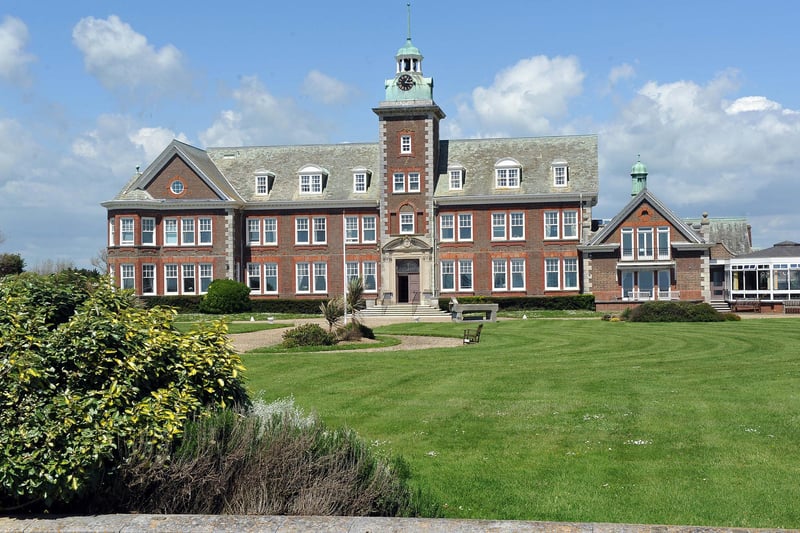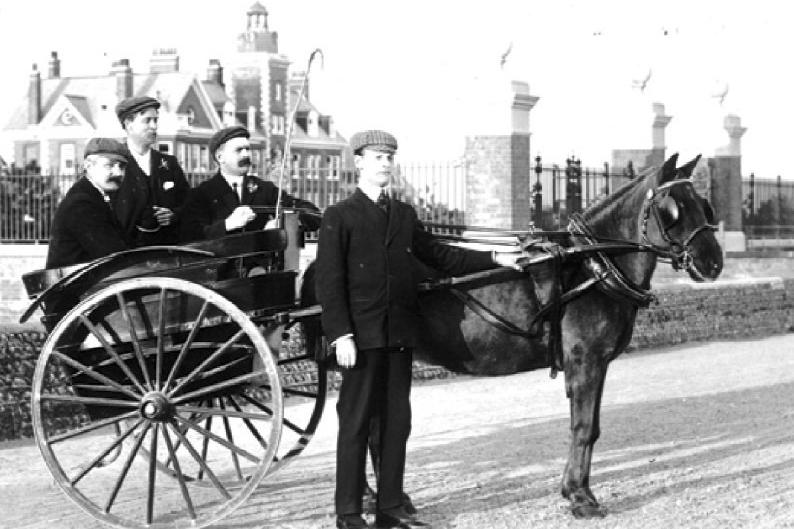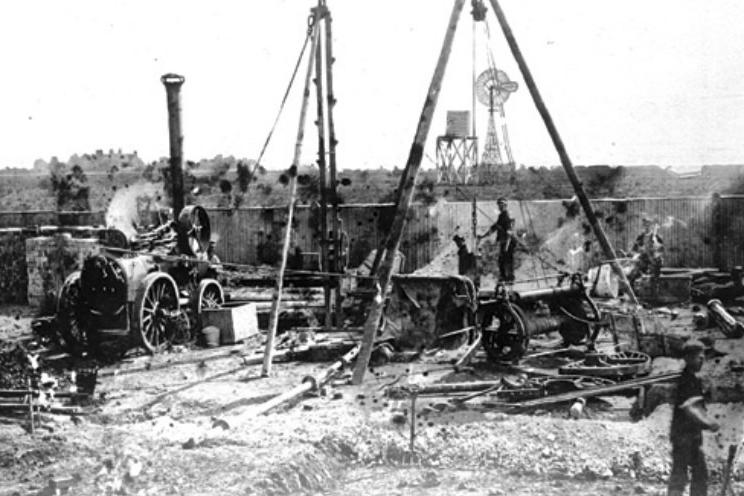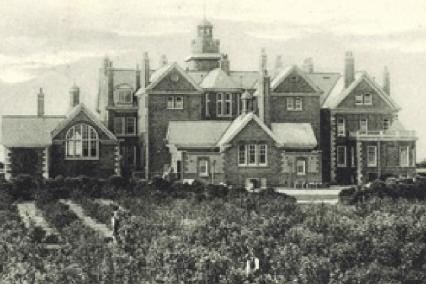One of the biggest misconceptions is who the building is for, as it looks so very grand – but it was built for working class people to recuperate and to this day, the cost of a stay is heavily subsidised, by up to 50 per cent for each guest.
The home is governed by The Carpenters' Company, a modern livery company stemming from a medieval guild in the City of London and a charitable trust, and it was founded by Sir Henry Harben, a past master of the company.
The indenture dated October 23, 1897, states: "The said Institution hereby founded shall be a Home wherein persons of the working class and others may be received during Convalescence or sickness, either gratuitously or upon payment as may be from time to time prescribed by the Regulations or directions."
The story behind the formation of the home is told in the booklet Rustington Convalescent Home, An Account of the Home and its Founder, by Lieselotte Clark.
Sir Henry came from a prosperous Sussex family linked with the Old Bank in Lewes. A pioneer of industrial life assurance, he joined the Prudential as an accountant at the age of 28 and rose to become chairman.
He was also known for his cricket and having purchased Warnham Lodge near Horsham in 1893, he set about having a good pitch laid out. Within a few years, a pavilion had been built and a new wing attached to the house for visiting teams, with W.G. Grace and Walter Mead among the many famous cricketers making use of the facilities.
Sir Henry was a philanthropist with a particular concern for medical charities, perhaps influenced by his own experience of grief, having lost his first wife after 37 years of marriage and then his only son - a severe shock from which he never fully recovered.
He joined The Carpenters' Company in April 1878 and was elected Master for the year beginning July 1893. Five years later, he was appointed High Sheriff of Sussex. Sir Henry was generous and enthusiastic in his support for local institutions, schools, churches and medical charities, including funding a village hall and club in Warnham.
Sir Henry began a search for a suitable site in Sussex for a convalescent home and considered options along the coast, including Worthing. Agricultural land at Mewsbrook Furlong in Rustington, which had been part of the Duke of Richmond's Goodwood Estate, became available and Sir Henry purchased what was known as The Sea Field. A striking Georgian-style home was built 250ft from the seafront and the grounds were enclosed with ornamental iron railings.
Frederick Wheeler, the man behind St James the Great Church in Littlehampton and many other West Sussex buildings, was the chosen architect. Sir Henry’s governing principle was practicality. He used the best materials and craftsmanship he could afford, made fittings functional as well as decorative, and used new technology and ideas. Early visitors marvelled at all the services worked by electricity and other modern features included cavity walls, glazed tiling and hard woods that did not require painting throughout the interior.
The home had an entertainment hall with semi-circular roof, a medical room, smoking room, dining room, kitchen, quiet room and reading room filled with books. The stunning main staircase, which remains to this day, was solid teak and the stained glass windows were inscribed with the home's motto, Peace and Rest.
Upstairs were 29 bedrooms, 17 with one bed, 10 with two beds and two with four beds. After the First World War, a more dormitory-like approach was adopted, with larger rooms having up to seven beds, in order to meet demand.
The home has always had its own laundry and when it was built, there was a unique water system. Fresh water was drawn from a 55ft well and an underground tank filled with salt water. Sea water was pumped to the home using an electric motor and the tank refilled at high tide direct from the English Channel.
More than £50,000 was spent by Sir Henry on the project before he invited the company to act as trustees. The home was opened in 1897 and soon after, Sir Henry arranged for an additional eight acres of adjoining farmland to be purchased to extend the grounds and grow produce, as well as house livestock.
The Bishop of Chichester opened the home on March 20, 1897, and at the beginning, a subscription scheme was operated. Patients were admitted for three weeks and endowment funds meant they could stay at little or no cost to themselves.
The home avoided being commandeered by the War Office in the First World War but two days after the declaration of war against Germany in September 1939, the Ministry of Health took it over under the Emergency Hospitals Scheme. The company was able to make monthly visits throughout the Second World War to monitor the condition of the home and it was de-requisitioned in August 1946.
Plumbing and heating systems were upgraded, furniture was renovated and new staff appointed ready for the home to reopen to patients on July 1, 1948. The need for modernisation was evident and the sale of the home's farmland in June 1968 helped to fund improvements.
The original subscription scheme survived into the 1960s. In the late 1970s, the standard stay for convalescence was reduced to two weeks and respite holidays were introduced, provided beds were available.
The centenary was celebrated on June 17, 1997, and the Duke of Norfolk was among guests. The home was officially registered under the National Care Standards Commission in 2003 and receives regular C QC inspections.
When Harben opened the home in 1897, the average patient was a middle-aged man recovering from an accident or an illness like bronchitis. Nowadays, more than half the admissions are women and many service users are recovering from cardiac surgery or a hip replacement.
Find out more about Rustington Convalescent Home at rustingtonconvalescenthome.co.uk

1. Rustington Convalescent Home
Rustington Convalescent Home is a unique gem in West Sussex, standing proud on a 17-acre seafront site but hidden in the sense that many do not appreciate what goes on inside or the story behind its creation Photo: Stephen Goodger / Sussex World L23533H14

2. Rustington Convalescent Home
Rustington Convalescent Home had its own pony and trap to transport patients to and from Angmering and Littlehampton railway stations. This picture is dated around 1905 and in 1914, a wagonette was purchased for £5. Photo: Rustington Museum / Submitted

3. Rustington Convalescent Home
Construction of the foundations for Rustington Convalescent Home around 1895 Photo: Rustington Museum / Submitted

4. Rustington Convalescent Home
The orchard at Rustington Convalescent Home around 1908. By the outbreak of the Second World War, the orchard had fallen into disuse and the remaining stumps were cleared in 1951. Photo: Rustington Convalescent Home / Submitted